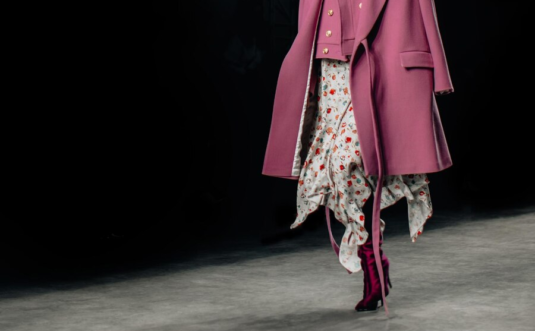Choosing the right fabric is an essential aspect of fashion design. The fabric you select not only affects the overall appearance and drape of the garment but also influences its comfort, durability, and functionality. To help you navigate the world of fabrics and make informed decisions, here is a comprehensive fabric selection guide:
- Consider the Purpose: Start by determining the purpose of the garment. Is it for casual wear, formal occasions, or athletic activities? Different fabrics have different properties that make them suitable for specific purposes. For example, lightweight and breathable fabrics like cotton or linen are great for casual and summer wear, while silk or satin adds elegance to formal attire;
- Fabric Composition: Understanding fabric composition is crucial. Fabrics can be made from natural fibers like cotton, silk, wool, or linen, or synthetic fibers such as polyester, nylon, or rayon. Each fiber has its own characteristics, so consider factors like breathability, softness, stretch, and care requirements when selecting fabrics;
- Evaluate Durability: Assess the durability and longevity of the fabric. Some fabrics, like denim or canvas, are known for their strength and resistance to wear and tear, making them suitable for outerwear or sturdy garments. Conversely, delicate fabrics like chiffon or lace may require more care and are better suited for lightweight or decorative elements;
- Consider Comfort: Comfort is paramount in clothing. Consider the comfort level of the fabric in terms of breathability, moisture-wicking properties, and how it feels against the skin. Fabrics like cotton, modal, or bamboo are known for their softness and breathability, making them ideal for everyday wear;
- Evaluate Draping and Structure: The way a fabric drapes and holds its shape can greatly impact the silhouette of the garment. Lightweight and flowy fabrics like chiffon or georgette create a soft and romantic look, while stiffer fabrics like taffeta or organza can add structure and volume;
- Pay Attention to Care Instructions: Check the care instructions of the fabric before making a decision. Some fabrics require special care like dry cleaning, while others can be easily machine washed. Consider your lifestyle and the level of maintenance you’re willing to commit to when choosing fabrics;
- Consider Print or Pattern Compatibility: If you have a specific print or pattern in mind, consider how it will look on the fabric you choose. Some fabrics are better suited for prints, while others may distort or lose detail. Additionally, certain fabrics lend themselves well to specific printing techniques like digital printing or screen printing;
- Color Fastness: Ensure the fabric has good colorfastness, especially if you plan on washing the garment frequently. Fabrics that retain color over time will help maintain the garment’s aesthetic appeal;
- Budget Considerations: Lastly, consider your budget. Fabrics can vary greatly in cost, so it’s important to balance your desired quality and aesthetic with your budget constraints.
By taking these factors into account, you can make informed decisions when selecting fabrics for your fashion designs. Remember to experiment, swatch, and test fabrics to ensure they meet your desired criteria before incorporating them into your final garments.
Sustainability Considerations
In today’s fashion industry, there is a growing emphasis on sustainability and ethical practices. When choosing fabrics for your fashion designs, it’s essential to consider their environmental impact and the social responsibility associated with their production. Here are some key aspects to consider:
- Eco-Friendly Fibers: Look for fabrics made from eco-friendly fibers, such as organic cotton, hemp, linen, or bamboo. These fibers are cultivated without the use of harmful pesticides or synthetic fertilizers, reducing the environmental impact. Organic cotton, for example, uses less water and promotes soil health, making it a more sustainable choice;
- Recycled Materials: Consider fabrics made from recycled materials, including recycled polyester, nylon, or even upcycled fabrics. These materials help reduce waste and the demand for virgin resources. Recycled polyester, often made from plastic bottles, can have a significantly lower carbon footprint compared to its conventional counterpart;
- Biodegradable Fabrics: Explore biodegradable fabric options that break down naturally and reduce environmental waste. Fabrics like Tencel (lyocell), Modal, or even certain types of silk are known for their biodegradability. They can decompose without leaving harmful residues behind, making them a more environmentally conscious choice;
- Ethical Production: Consider fabrics produced under fair trade or ethical guidelines. Look for certifications such as Global Organic Textile Standard (GOTS) or Fair Trade Certified, which ensure that the fabric production process adheres to social and environmental standards. These certifications support fair wages, safe working conditions, and sustainable practices throughout the supply chain;
- Low-Impact Dyes: Pay attention to the dyeing process of the fabric. Opt for fabrics dyed with low-impact or natural dyes that minimize chemical usage and water pollution. Low-impact dyes are typically free from heavy metals and toxic substances, making them a more eco-friendly choice;
- Traceability and Transparency: Consider the traceability of the fabric’s supply chain. Look for fabrics where the origin and production processes are transparently disclosed. Knowing where the fabric comes from and how it’s produced allows you to make more informed decisions about its sustainability credentials.
By incorporating these sustainability considerations into your fabric selection process, you can contribute to a more environmentally conscious and responsible fashion industry. Remember, making sustainable choices extends beyond just the fabric itself; it encompasses the entire lifecycle of the garment, from design to production and ultimately, disposal.
Conclusion
In the dynamic realm of fashion design, the selection of fabric plays a pivotal role in creating garments that embody both style and sustainability. By carefully considering factors such as the intended purpose of the garment, the composition of the fabric, its durability and comfort, draping characteristics, care instructions, print compatibility, color retention, budget, and environmental impact, designers can make informed choices when choosing fabrics for their creations.
Embracing sustainability and ethical practices is a growing imperative in the fashion industry. Opting for fabrics crafted from eco-friendly fibers, recycled materials, and biodegradable options can significantly reduce the ecological footprint of fashion. Additionally, supporting fabrics produced under fair trade guidelines promotes social responsibility throughout the supply chain.
Remember, fabric selection goes beyond aesthetics; it reflects the values and principles of the designer. By making conscious decisions, fashion professionals can contribute to a more environmentally conscious and socially responsible industry. Stay curious, explore new fabric alternatives, and stay abreast of sustainable practices to create designs that are not only visually captivating but also gentle on the planet.
Let your fabric choices serve as a testament to your commitment to a more sustainable and ethical future for fashion, where creativity and conscience intertwine to shape a better world.




